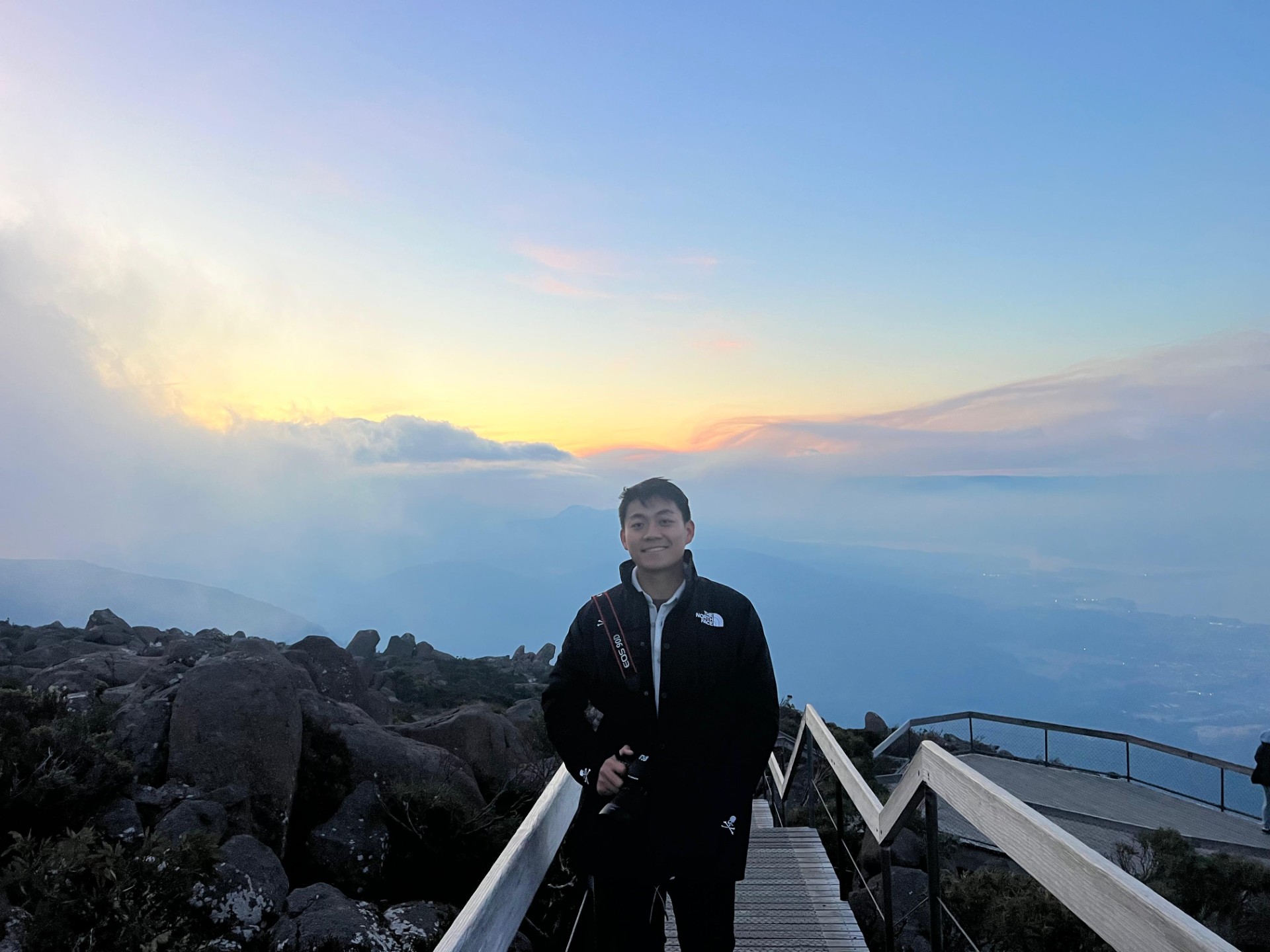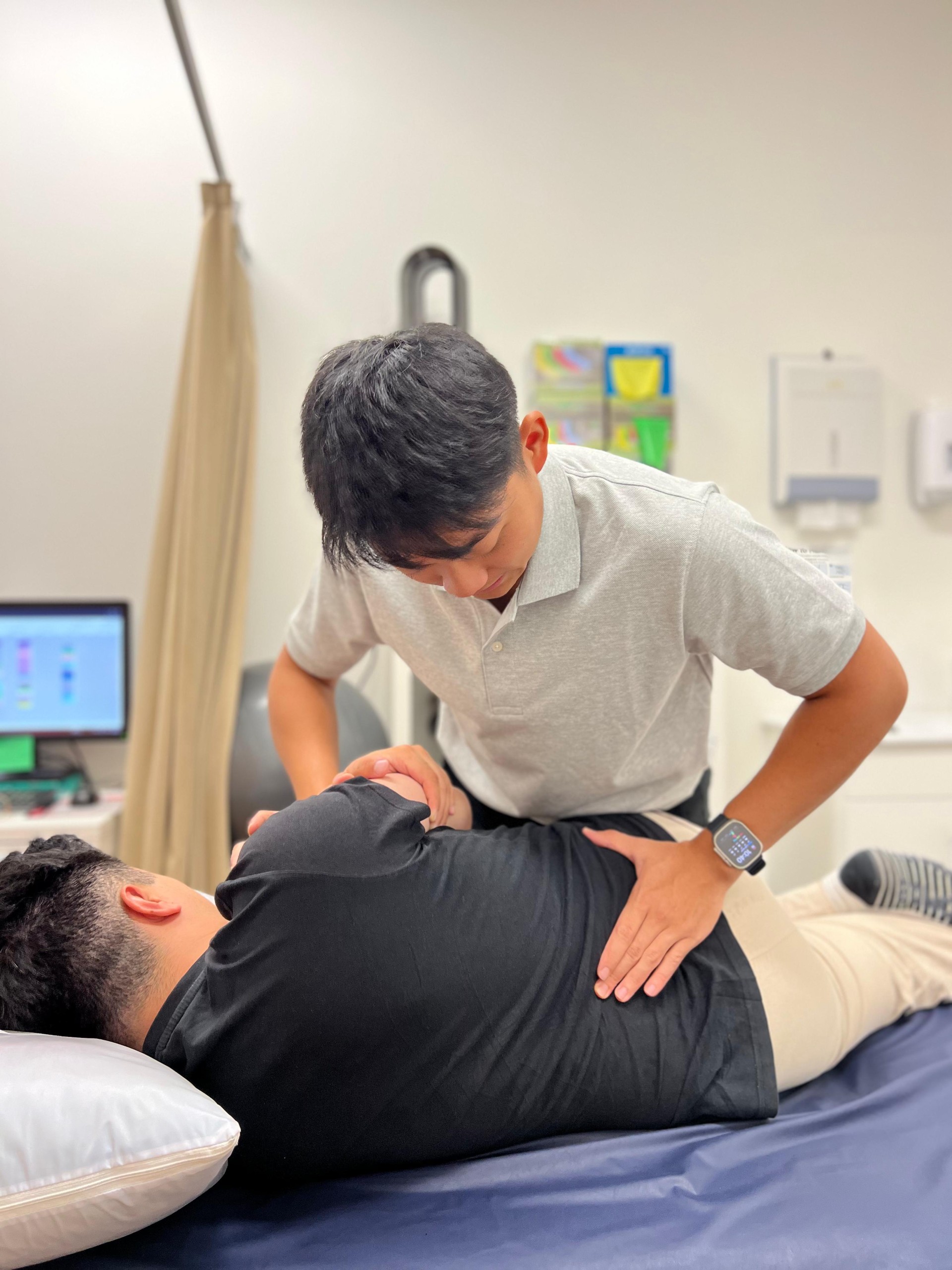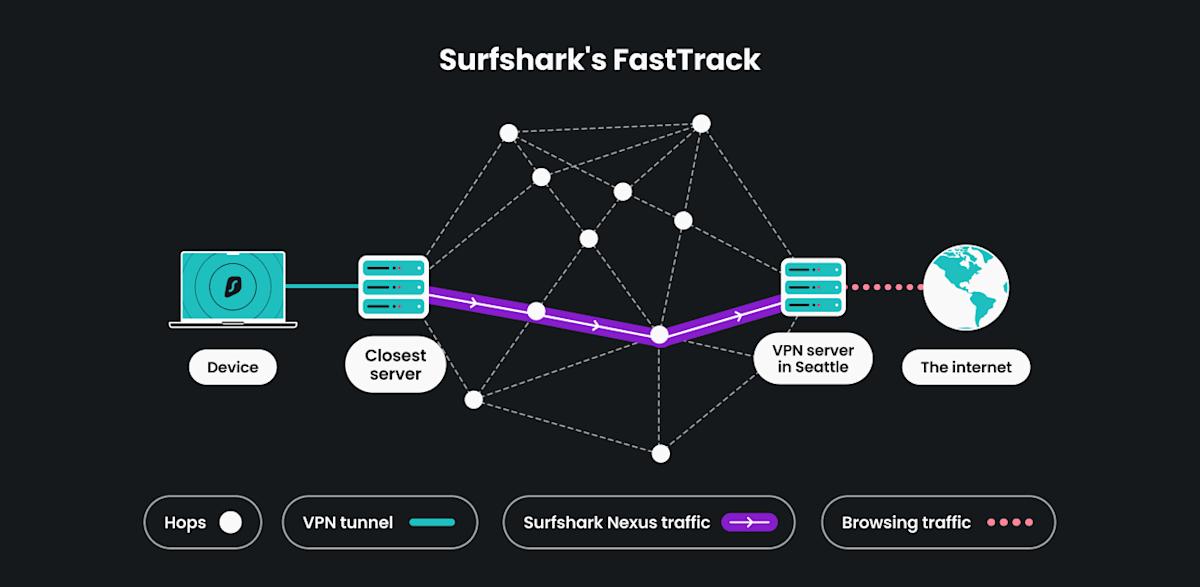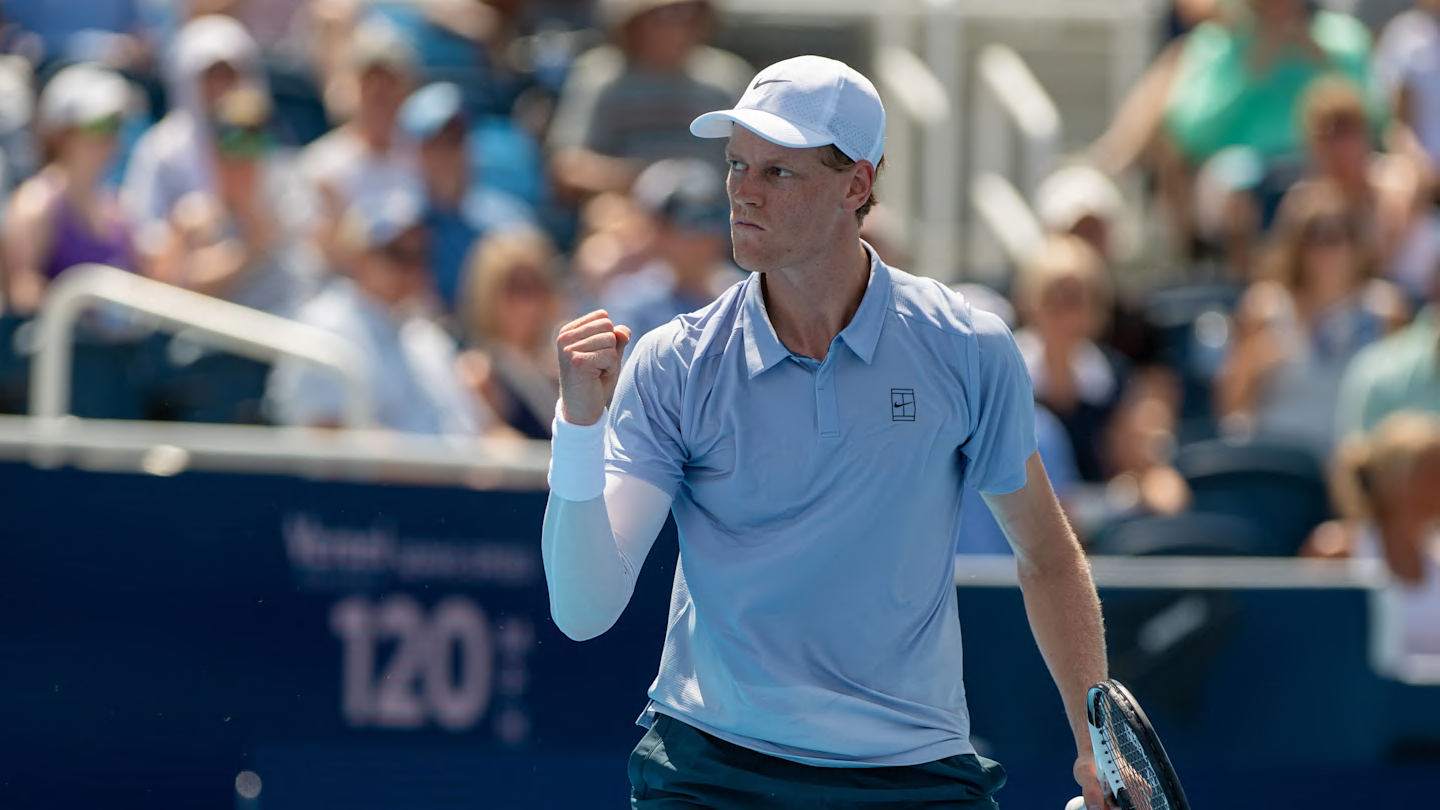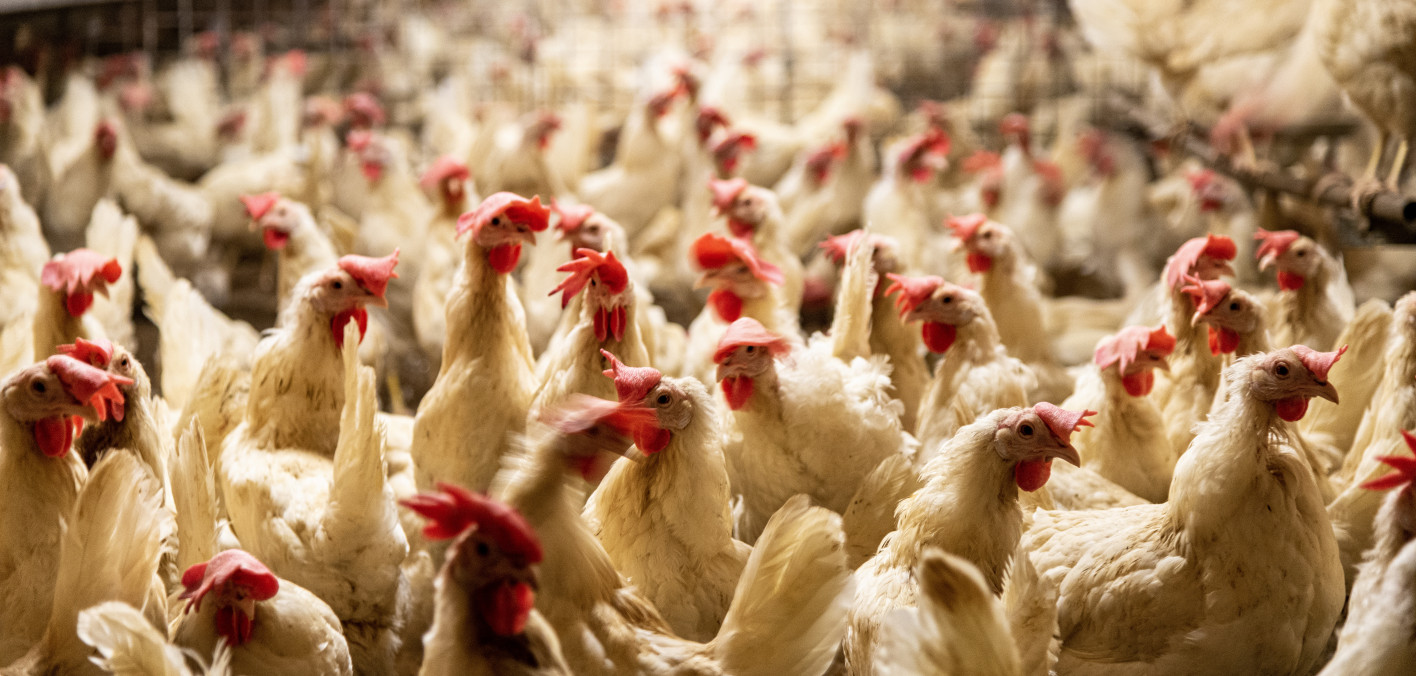Introduction
Chronic bronchitis (CB) is a common chronic inflammatory respiratory disease characterized by persistent cough, expectoration, or wheezing lasting for more than three months per year for at least two consecutive years.1 During acute exacerbations, excessively thick sputum becomes difficult to expectorate, leading to airflow obstruction, progressive lung function decline, and an increased risk of acute respiratory complications, ultimately contributing to a higher all-cause mortality rates.2 Several factors contribute to the onset and progression of CB, including advanced age,3 smoking,4 exposure to tobacco smoke, biomass fuel, and environmental pollutants such as dust,5,6 as well as a history of tuberculosis, allergies, or asthma.7 Globally, CB prevalence varies widely among general adult populations, ranging from 3% to 6% in Westernised countries.8 However, individuals with chronic obstructive pulmonary disease (COPD) are significantly more susceptible, with up to 74% developing CB.9 While the global incidence of CB has declined from 1990 to 2019, the absolute number of cases and CB-related deaths.10 According to the World Health Organization (WHO), approximately 3.4 million deaths occur annually due to CB-related complications.10 Therefore, effective treatment and management strategies for CB are critical for reducing mortality and alleviating the burden of COPD. Despite therapeutic advances, chronic bronchitis continues to pose significant global health and economic burdens, particularly among aging populations. As such, complementary approaches like TCM offer a valuable avenue for improving outcomes.
Successful CB management primarily aims to alleviate symptoms, prevent complications, and slow disease progression by reducing excessive mucus production, controlling inflammation, and minimizing chronic cough.11 Current treatment approaches include pharmacological interventions such as bronchodilators, glucocorticoids, antibiotics, and phosphodiesterase-4 inhibitors, alongside nonpharmacological strategies like smoking cessation and pulmonary rehabilitation.12 However, a CHEST Expert Panel Report by Malesker et al highlighted that current CB treatment options, particularly for chronic cough, are limited in effectiveness and generally of low quality.13–15 Although emerging treatments, such as bronchial rhinoplasty, have demonstrated potential in preliminary studies, and they are still in the early research phase.14 Given these challenges, there is an urgent need to explore reliable alternative treatment strategies to enhance CB management and improve patient outcomes.
Traditional Chinese Medicine (TCM) takes a holistic approach to treating diseases by addressing both symptoms and underlying causes at different stages, offering unique therapeutic advantages.15 Research has shown that TCM formulations can effectively alleviate symptoms of CB. For example, Dong et al demonstrated that Zhisou Powder exerted anti-inflammatory effects by reprogramming the disrupted arachidonic acid metabolic pathway, contributing to its therapeutic benefits for CB.16 Shui Man Jing, derived from the dried aerial parts of Veronica linariifolia subsp. dilatata (Nakai & Kitag). Hong, has shown promising application in CB treatment.17 In addition, Zhang et al reported that Cordyceps sinensis, a well-known TCM herb, enhances treatment efficacy and improves the quality of life in CB patients.18
Guben Kechuan Granules is a TCM formulation commonly used to treat cough, excessive phlegm, and shortness of breath associated with spleen deficiency, and unstable kidney qi.19,20 It should be mixed with warm water before oral administration. Its key ingredients include Radix Codonopsis, Rhizoma Atractylodis Macrocephalae, Radix Glycyrrhizae Preparata, Poria cocos, Schisandra chinensis Fructus, Radix Ophiopogonis, and Fructus Psoraleae.21 Clinically, Guben Kechuan Granules is recommended for CB patients, particularly during stable periods, as it has been shown to improve clinical symptoms, lung function, and inflammatory markers. In elderly patients with stable-stage COPD, a 12-week adjunctive treatment with Guben Kechuan Granule significantly enhanced forced expiratory volume in one second (FEV1), peak expiratory flow (PEF), and FEV1/FVC (forced vital capacity), while reducing Th17 and Th17/Treg levels.19 Additionally, Guben Kechuan Granule may help alleviate CB symptoms, lower inflammatory levels, and regulate immune function.20 When combined with salbutamol aerosol, Guben Kechuan Granules have demonstrated an improved total effective rate (99.3%), increased pulmonary function parameters (FEV1, FEV1/FVC, PEF, and maximum mid-expiratory flow [MMEF)), and reduced levels of inflammatory cytokines such as TNF-α, IL-8, IL-10, and IL-15 in stable COPD patients.
Although the efficacy and safety of Guben Kechuan Granules are currently under investigation in clinical studies [ChiCTR2300078017], comprehensive data on its therapeutic effects in CB remain limited. This study aims to evaluate the efficacy and safety of Guben Kechuan Granules in CB patients through a multi-center, randomized controlled trial. To provide a comparative assessment, we include Guilong Kechuanning Capsule— a treatment with established efficacy for CB— as a positive control, while a subject education group serves as the blank control. Guilong Kechuanning Capsule was selected based on its documented effectiveness in CB treatment and widespread clinical use, serving as a credible active comparator. This study is distinguished by its 48-week duration and real-world observation of AECB episodes, providing a more comprehensive evaluation of long-term efficacy.
Material and Methods
Participant Recruitment and Study Design
This multi-center, randomized, controlled trial (Chinese Clinical Trial Registry; registration number: ChiCTR2200063321) was initiated by Hangzhou Zhongmei Huadong Pharmaceutical Co., Ltd (Zhejiang, China) and conducted by China-Japan Friendship Hospital (Beijing, China). The study aimed to evaluate the efficacy and safety of Guben Kechuan Granules in improving clinical symptoms of chronic bronchitis and was carried out in compliance with the Declaration of Helsinki, Good Clinical Practice (GCP) guidelines, and Chinese regulatory requirements.
Participants were recruited continuously from November 2022 to March 2023 from multiple hospitals across China, including from the China-Japan Friendship Hospital, Taiyuan Central Hospital, Ningbo Traditional Chinese Medicine Hospital, People’s Hospital of Xiangtan County, Hospital of Sanyuan County, People’s Hospital of Xindu District (Xingtai City), People’s Hospital of Yanggu County, People’s Hospital of Mengyin County, Longhua County Traditional Chinese Medicine Hospital, and Xiyang Public Hospital.
As illustrated in Figure 1, a total of 300 participants were randomly assigned in a 2:2:1 ratio into the following groups: Experimental group (Guben Kechuan Granules, n=120), Positive drug control group (Guilong Kechuanning Capsule, n=120) and Blank control group (subject education only, n=60). Among the enrolled participants, one subject (ID: 257) in the experimental group did not take the medication. Consequently, 299 participants were included in the Full Analysis Set (FAS) analysis, 298 participants were included in the Safety Analysis Set (SS), and 278 participants were included in the Per Protocol Set (PPS). The clinical trial period comprised a 24-week treatment phase (with study visits every four weeks) followed by a 24-week follow-up phase (with study visits every four weeks).
|
Figure 1 The flow chart of subject distribution.
|
Inclusion Criteria
Participants were eligible for the study if they met the following criteria:
(1) Diagnosis of CB based on the criteria outlined in Internal Medicine (9th edition, 2018), published by the People’s Health Publishing House;
(2) Mild symptoms (cough, expectoration, and wheezing) with symptom scores ≤ 1.
(3) Aged 18 to 75 years, with no restriction on gender.
(4) Voluntary participation, with signed informed consent.
Exclusion Criteria
Participants were excluded if they met any of the following conditions:
(1) Recent acute bronchitis or acute exacerbation of CB (AECB) within the past month.
(2) Presence of other respiratory diseases with similar symptoms, including pulmonary tuberculosis, eosinophilic bronchitis, bronchial lung cancer, idiopathic pulmonary fibrosis, pneumonia, bronchial asthma, bronchiectasis, and gastroesophageal reflux.
(3) Recent use of similar medications, specifically oral drugs with comparable functions within the past two weeks.
(4) Abnormal renal or liver function, defined as: Serum creatinine (Scr) levels exceeding the upper reference limit, alanine aminotransferase (ALT) and aspartate aminotransferase (AST) levels exceeding twice the upper reference limit.
(5) Presence of serious comorbidities, including cardiovascular, cerebrovascular, liver, kidney, digestive, or hematopoietic disorders.
(6) History of substance abuse, including chronic alcoholism and drug addiction.
(7) Pregnancy or lactation, or inability to adhere to strict contraceptive during the study period.
(8) Allergy to study drug ingredients.
(9) Cognitive or psychiatric disorders, including intellectual disability or severe mental illness.
(10) Participating in another clinical trials within the past three months.
(11) Any other condition deemed inappropriate for study inclusion by the investigator.
Randomization Procedure
This trial utilized a block randomization method to ensure balanced allocation across study groups. The appropriate block length was determined, and random sequences for 300 subjects were generated using SAS software, assigning participants to the experimental group, positive drug control group, and blank control group in a 2:2:1 ratio. Each participant was assigned a unique serial number (001–300) with a corresponding treatment allocation listed in a random coding table The study was single-blind for participants. Blinding of data analysts was also implemented. Trial medications were repackaged in identical containers to reduce perceptual bias.
Medicine Interventions
Participants were divided into three groups with the following intervention protocols:
(1) Experimental group (n=120): Guben Kechuan Granules, 1 bag (2 g) three times daily
(2) Positive drug control group (n=120): Guilong Kechuanning Capsule, 3 capsules three times daily.
(3) Blank control group (n=60): Subject education only, in case of AECB, treatment was administered according to clinical regulations.
During the study, additional antitussive or expectorant medications were not permitted during the non-acute attack period. However, certain concomitant treatments were allowed under the following conditions:
(1) Management of comorbidities such as hypertension or diabetes requiring continued medication or treatment.
(2) Intervention for adverse events occurring during the study.
(3) When AECB occurs, antibiotics, cough relieving, expectorants, and other drugs are given according to the needs of routine diagnosis and treatment;
(4) AECB: Standard treatment with antibiotics, cough suppressants, expectorants, or other necessary medications based on routine clinical practice. TCM decoction or Chinese patent medicine) were allowed, but their use was restricted to no more than 21 consecutive days per occurrence, a cumulative maximum of three months over the entire treatment period.
Guben Kechuan Granules, 1 bag (2 g) three times daily (mixed with warm water before oral administration). All participants, including those in the medication groups, received standardized subject education at baseline and during follow-up.
Compliance and Concomitant Medication Analysis
Compliance with the treatment protocol was assessed using descriptive statistics, including: number of cases, mean, standard deviation, median, minimum and maximum values, Lower quartile (Q1), and Upper quartile (Q3).
Treatment compliance (%) was calculated as follows.
Treatment compliance = (actual dosage / theoretical dosage) × 100%.
Efficacy and Safety Evaluation
The efficacy and safety of the treatment were assessed during both the treatment period and the follow-up period using the following measures: (1) Clinical symptom evaluation: cough, expectoration and wheezing were scored on a 0–100 scale. (2) AECB assessment: AECB severity was classified based on clinical symptom criteria (see Supplementary Table 1). (3) Pulmonary function tests (PFTs): FEV1, FVC, FEV1% predicted (FEV1%pred), FEV1/FVC ratio, MMEF, and PEF via MasterScreen PFT instrument (Jaeger, Germany). (4) Immunological function assessment: CD4+, CD8+, and CD4+/CD8+ ratio (performed only at select centers with necessary facilities). (5) Quality of life assessment: Evaluated based on mobility (ability to walk), self-care, daily activities, pain/discomfort, and anxiety/depression.
Adverse events (AEs) were recorded and classified using the System Organ Class (SOC) and Preferred Term (PT) codes from the latest edition of the Medical Dictionary for Regulatory Activities (MedDRA).22
Statistical Analysis
Based on prior studies, the effective rates in the experimental, positive drug control, and blank control groups were 96.15%, 95.00%, and 77.08%, respectively.20,23 Assuming a 20% dropout rate, the minimum required sample size for each group was calculated as: Experimental group: 84, Positive drug control group: 84, Blank control group: 42. The 20% dropout estimate was based on previous observational CB trials with similar duration, although the actual dropout rate was only 0.33%. The study was designed with 80% power (β = 0.20) and a two-sided α = 0.05. Statistical analyses were performed using SAS 9.4 software. Baseline characteristics, treatment compliance, and concomitant medication efficacy were analyzed using the full analysis set (FAS) and per-protocol set (PPS), while safety analyses were conducted using the safety set (SS). For measurement indices, descriptive statistics—including case numbers, cases, mean, standard deviation, median, minimum, and maximum values—were reported. Categorical variables were presented as case numbers and percentages. Variance analysis or the Kruskal–Wallis H-test was used for comparisons between groups, while paired t-tests or signed-rank tests were applied for within-group before and after treatment. All statistical tests were two-tailed, with a p<0.05 considered statistically significant.
Results
Demographic and Baseline Characteristics
Table 1 summarizes the baseline demographic and clinical characteristics of participants across the three study groups: experimental group (n=119), positive drug control group (n=120), and blank control group (n=60). Key characteristics analyzed included age, gender, number of AECB episodes in the past year, hospitalizations due to AECB, past medical history, allergic history, and family history. No significant differences were observed among the three groups (p > 0.05), indicating a well-balanced randomization.
 |
Table 1 The Demographic Characteristics Within Three Groups
|
Compliance and Concomitant Medication
In the experimental group, the actual cumulative dosages of subjects was 496.55 ± 21.41 bags, with an average administration duration of 24.18 ± 0.90 weeks. The treatment compliance within the 80%–120% was 100%. In the positive drug control group, the actual cumulative dosages of subjects were 1475.78 ± 150.38 capsules, with an average administration duration of 23.92 ± 2.21 weeks, and a compliance rate of 99.17%.
Regarding concomitant medication use, during the treatment period, 47 cases (92 instances, 39.50% utilization rate) were recorded in the experimental group, 61 cases (109 instances, 50.83% utilization rate) in the positive drug control group, and 37 cases (88 instances, 61.67% utilization rate) in the blank control group. During the follow-up period, 26 cases (48 instances, 21.85% utilization rate) in the experimental group, 55 cases (101 instances, 45.83% utilization rate) in the positive drug control group, and 27 cases (58 instances, 45.00% utilization rate) in the blank control group.
Efficacy Outcomes
In the evaluation of CB symptoms, the scores for cough, expectoration, wheezing, and total symptom scores are detailed in Supplementary Table 2. As shown in Figure 2, CB symptom scores were significantly reduced after 24 weeks of treatment in both the experimental and positive drug control groups (p<0.05) compared to baseline. Throughout the treatment period, significant differences were observed among the three groups (all p<0.001), as well as in pairwise comparisons between the two treatment groups (all p<0.05). At the 24-week follow-up, significant differences in CB symptom scores remained evident both within and between groups (all p< 0.05).
 |
Figure 2 The relative changes of CB symptoms including cough, expectoration, wheezing in the experimental group, the positive drug control group and the blank control group. *p<0.05.
|
In the assessment of AECB after treatment, the time to first AECB occurrence was 131.41±101.71 days (mean ± standard deviation) in the experimental group, 130.29±96.34 days in the positive drug control group, and 84.73±63.05 days in the blank control group (p=0.0219). The interval between AECB occurrences was longest in the experimental group (157.75±69.86 days), compared to 119.91±63.48 days in the positive drug control group and 110.43±53.13 days in the blank control group (p=0.3401). The duration of AECB was shortest in the experimental group (6.59±4.68 days), compared to 8.18±5.49 days in the positive drug control group and 12.81±8.08 days in the blank control group (p=0.0002). The average severity of AECB within the three groups was 1.25 in the experimental group, 1.33 in the positive drug control group, and 1.50 in the blank control group (p=0.0218). The frequency of AECB was also lowest in the experimental group (0.33±0.54), compared to 0.84±0.93 in the positive control group and 1.34±1.32 in the blank control group (p<0.0001). Except for AECB occurrence intervals, all other indicators in the experimental and positive drug control groups were significantly different from those in the blank control group (all p<0.05). FAS and PPS analysis further confirmed significant differences in AECB duration and frequency between groups (p<0.05, Table 2).
 |
Table 2 The AECB Analysis Within Three Groups After Treatment
|
For the evaluation of pulmonary function, no significant changes were observed in FEV1/FVC%, FEV1%pred, PEF, MMEF, FVC, or FEV1 in any of the three groups after 24 weeks of treatment (all p>0.05, Table 3). However, no significant improvement in pulmonary function parameters (FEV1/FVC%, FEV1%pred, PEF, MMEF, FVC, or FEV1) was observed in any group after 24 weeks.
 |
Table 3 The Pulmonary Function and Immune Function After 24-week Treatment in Three Groups
|
Regarding immune function, as presented in Table 3, there were no significant differences in CD4+ (p=0.5105), CD8+ (p=0.7045), and CD4+ / CD8+ ratio (p=0.8882) among the three groups.
For quality of life, significant improvements were observed in Walking around, Self-care, Daily activities, and overall Health status across the three groups after 24 weeks of treatment (all p<0.05). However, no significant changes were noted in pain/discomfort or anxiety/depression, as indicated in Supplementary Table 3.
Adverse Events
As shown in Table 4, during the treatment period, a total of 14 cases of adverse events occurred in the experimental group (15 instances overall), resulting in an incidence rate of 11.75%. The majority of these were infectious and invasive diseases, accounting for 12 cases (12 instances) with an incidence rate of 10.08%, which may be associated with the short duration of drug use. Notably, no adverse events were reported in the experimental group during the follow-up period. These included upper respiratory tract infections, pharyngitis, and acute bronchitis.
 |
Table 4 The Adverse Events During the Treatment Period and Follow-up Period
|
Discussion
Chronic bronchitis (CB) is a common and increasingly prevalent condition, exacerbated by factors such as environmental pollution, smoking, and aging.3–6 In clinical practice, Chinese patent medicines offer advantages such as convenient administration, mild side effects, and distinctive therapeutic effects, making them a valuable treatment option.24
In Traditional Chinese Medicine (TCM), CB falls under the categories of “cough”, “asthma syndrome”, and “phlegm retention”, with its pathogenesis closely linked to dysfunctions in the lung, spleen, and kidneys. The renowned physician Zhang Zhongjing recognized the essence of CB in his Synopsis of the Golden Chamber,25 where he proposed the therapeutic principle of “warming the lung and transforming phlegm”. This led to the development of several effective classical prescriptions, including Xiaoqinglong Decoction, Linggan Wuwei Jiangxin Decoction, and Shegan Mahuang Decoctionwere.25 Modern studies have further explored their mechanisms. Xiaoqinglong Decoction may exert therapeutic effects by modulating the PI3K-AKT signaling pathway,26 while Linggan Wuwei Jiangxin Decoction modulating inflammatory responses and airway fluid by reducing IL-2 and IL-4 levels and increasing aquaporin-1 expression in the lungs, thereby alleviating CB symptoms.27
In this multi-center, randomized, and controlled trial, we assessed the efficacy and safety of Guben Kechuan Granules (experimental group, n=119) in comparison to Guilong Kechuanning Capsules (positive drug control group, n=120) and a blank control group (n=60).
The intervention with Guben Kechuan Granules significantly improved CB symptoms—including cough, expectoration, and wheezing—during both the 24-week treatment period and the 24-week follow-up period, compared with both the positive drug control group and the blank control group (all p<0.05). As AECB represents the sudden worsening of CB symptoms, the study findings suggest that Guben Kechuan Granules effectively delayed the onset of the first AECB episode, shortened AECB duration, reduced AECB severity, and lowered AECB frequency compared to the blank control group (all p<0.05). Additionally, quality of life indicators, including walking ability, self-care, daily activities, and overall health status, showed significant improvements after 24 weeks of treatment with Guben Kechuan Granules. Despite symptom improvement, pulmonary function did not significantly change, possibly reflecting the mild baseline impairment and relatively short intervention time.
These findings highlight the potential of Guben Kechuan Granules as an effective CB treatment. Similarly, in a Bailing capsule therapy study, patients experienced a significant reduction in CB severity and a decrease in AECB episodes following 48 weeks treatments and follow-up.18 Moreover, in CB patients, OM-85 therapy has been shown to lower the rate of acute exacerbations after 12 weeks of treatment, with a favorable safety profile.28 A combination of Hedera helix (ivy) leaf extract and Coptidis Rhizome Syrup was also found to reduce bronchitis symptoms and improve respiratory quality of life in CB patients.29
Importantly, no overall adverse events occurred during the follow-up period in the experimental group. In terms of pulmonary function, the experimental group showed greater improvements in PEF, MMFE, FVC, and FEV1 compared to the control groups after 24 weeks of treatment; however, the differences were not statistically significant, possibly due to limited baseline severity and mild disease population rather than sample size alone. Future studies should consider expanding the sample size and extending the treatment period to further investigate the impact of Guben Kechuan Granules on lung function. Despite these promising findings, the precise mechanism of action of Guben Kechuan Granules remains unclear. Gu-Ben-Ke-Chuan decoction, recorded in the Chinese Pharmacopeia and approved by the China Food and Drug Administration,30 has been reported to treat CB via the TNF-associated anti-inflammatory pathway, as revealed by integrated systems pharmacology and surface plasmon resonance approaches.31 Another study suggests that Guben Kechuan Granules exert immunomodulatory effects by regulating T lymphocyte subsets, which influence thymus and spleen indices in experimental COPD models.32
This study has certain limitations that should be addressed in future research. First, the use of concomitant medications may have influenced the therapeutic effects of Guben Kechuan Granules in CB patients, potentially introducing variability in outcomes. Second, the sample size was relatively small, which may have affected the statistical power of some findings, particularly regarding pulmonary function improvements. Third, this study lacked standardized mechanism research to clarify the precise biological pathways through which Guben Kechuan Granules exert their effects.
Given the critical role of inflammatory factors in CB pathogenesis,33 future studies should investigate how Guben Kechuan Granules influence the expression levels of key inflammatory mediators such as IL-1, IL-6, and TNF-α. A deeper understanding of these mechanisms could provide stronger scientific validation for the use of Guben Kechuan Granules in CB treatment. Antibiotics and supportive treatments for AECB may have influenced symptom resolution, though their use was protocol-limited. This represents a potential confounding factor.
Conclusion
This study demonstrates that Guben Kechuan Granules can effectively alleviate CB symptoms, reduce AECB severity, and lower AECB frequency, making it a promising therapeutic option for CB patients. Its mechanism of action is currently being further explored at the Artemisinin Research Center of the Chinese Academy of Traditional Chinese Medicine. Moving forward, rapid patient enrollment across multiple global sites will be essential for conducting large-scale, multi-center trials. This will ensure the rapid collection of high-quality clinical data, ultimately supporting the broader application of Guben Kechuan Granules in CB management. While Guben Kechuan Granules significantly improved symptoms and reduced AECB episodes, no significant changes in pulmonary function were observed during the 24-week treatment period.
Data Sharing Statement
The individual deidentified participant data (including symptom scores, pulmonary function results, and adverse events) that support the findings of this study will be made available upon reasonable request. Study protocols and statistical analysis plans will also be shared. Data will be accessible via the corresponding author (Email: [email protected]) starting from the date of publication and will remain available for five years.
Ethics Approval and Informed Consent
This study was approved by The Ethics Committee of China-Japan Friendship Hospital (YW2022-007-02). Participants have provided their written informed consent to participate in this study.
Funding
This trial was funded by Traditional Chinese Medicine Inheritance and Innovation “Ten-Hundred-Thous” and Talents Program (Qihuang Program, grant No.: 2019-QTL-003).
Disclosure
The authors report no conflicts of interest in this work.
References
1. Wu H, Li S, Du X, Zhu K, Li J. Mechanism of Tonifying Spleen-lung Recipe in the Treatment of Chronic Bronchitis Based on Network Pharmacology and Observational Data. Comb Chem High Throughput Screen. 2024. doi:10.2174/0113862073325718240827073225
2. Wang G, Hallberg J, Bergström P U, et al. Assessment of chronic bronchitis and risk factors in young adults: results from BAMSE. Eur Respir J. 2021;57(3):2002120. doi:10.1183/13993003.02120-2020
3. Yang X, Chung KF, Huang K. Worldwide prevalence, risk factors and burden of chronic cough in the general population: a narrative review. J Thorac Dis. 2023;15(4):2300–2313. doi:10.21037/jtd-22-1435
4. Xu Y, Zhao H, Yu C, et al. An investigation of the risk factors of chronic obstructive pulmonary disease in natural population-based cohorts in China – a nested case-control study. Front Public Health. 2023;11:1303097. doi:10.3389/fpubh.2023.1303097
5. Kelly F. Air pollution and chronic bronchitis: the evidence firms up. Thorax. 2021;76(8):744–745. doi:10.1136/thoraxjnl-2021-216883
6. Xu S, Marcon A, Bertelsen RJ, et al. Associations of long-term exposure to air pollution and greenness with incidence of chronic obstructive pulmonary disease in Northern Europe: the Life-GAP project. Environ Res. 2024;257:119240. doi:10.1016/j.envres.2024.119240
7. Mejza F, Gnatiuc L, Buist AS, et al. BOLD collaborators; BOLD study collaborators. Prevalence and burden of chronic bronchitis symptoms: results from the BOLD study. Eur Respir J. 2017;50(5):1700621. doi:10.1183/13993003.00621-2017
8. Zhang J, Wurzel DF, Perret JL, Lodge CJ, Walters EH, Dharmage SC. Chronic Bronchitis in Children and Adults: definitions, Pathophysiology, Prevalence, Risk Factors, and Consequences. J Clin Med. 2024;13(8):2413. doi:10.3390/jcm13082413
9. Widysanto A, Goldin J, Mathew G. Chronic Bronchitis. 2025.
10. Safiri S, Carson-Chahhoud K, Noori M, et al. Burden of chronic obstructive pulmonary disease and its attributable risk factors in 204 countries and territories, 1990-2019: results from the Global Burden of Disease Study 2019. BMJ. 2022;378:e069679. doi:10.1136/bmj-2021-069679
11. Global Initiative for Chronic Obstructive Lung Disease. (2019). Global Strategy for the Diagnosis, Management, and Prevention of COPD 2019 Report. Bethesda: GOLD.
12. GOLDCOPD. Global Strategy for diagnosis, management, and prevention of chronic obstructive pulmonary disease (2020). www.goldcopd.org. Accessed July 9, 2025.
13. Malesker MA, Callahan-Lyon P, Madison JM, Ireland B, Irwin RS. CHEST Expert Cough Panel. Chronic Cough Due to Stable Chronic Bronchitis: CHEST Expert Panel Report. Chest. 2020;158(2):705–718. doi:10.1016/j.chest.2020.02.015
14. Valipour A, Fernandez-Bussy S, Ing AJ, et al. Bronchial Rheoplasty for Treatment of Chronic Bronchitis. Twelve-Month Results from a Multicenter Clinical Trial. Am J Respir Crit Care Med. 2020;202(5):681–689. doi:10.1164/rccm.201908-1546OC
15. Zhang H, Ding N. Progress in the treatment of chronic bronchitis with Chinese and western medicine. TMR Integr Med. 2022;6:e22011. doi:10.53388/TMRIM202206011
16. Dong Y, Liu Y, Tang J, et al. Zhisou powder displays therapeutic effect on chronic bronchitis through inhibiting PI3K/Akt/HIF-1α/VEGFA signaling pathway and reprograming metabolic pathway of arachidonic acid. J Ethnopharmacol. 2024;319(Pt 1):117110. doi:10.1016/j.jep.2023.117110
17. Wu H, Wu L, Yu W, et al. Veronica linariifolia subsp. dilatata ameliorates LPS-induced acute lung injury by attenuating endothelial cell barrier dysfunction via EGFR/Akt/ZO-1 pathway. J Ethnopharmacol. 2024;321:117545. doi:10.1016/j.jep.2023.117545
18. Shu X, Xu D, Qu Y, et al. Efficacy and safety of Cordyceps sinensis (Hirsutella sinensis, Cs-C-Q80) in chronic bronchitis. Front Pharmacol. 2024;15:1428216. doi:10.3389/fphar.2024.1428216
19. Wang J, Yang B, Li L, Tu X, Zhu L. Effect of Guben Kechuan Granule combined with Seretide on elderly patients with stable COPD and its influence on Th17/Treg expression in peripheral blood. China J Gerontol. 2022;09:2131–2134.
20. Chai Y, Zhu F. Clinical study of Guben Kechuan capsule combined with ipratropium bromide in the treatment of chronic bronchitis. Drugs Clinic. 2017;32(12):5.
21. Dai C, Liu D, Qin C, et al. Guben Kechuan granule attenuates bronchial asthma by inhibiting NF-κB/STAT3 signaling pathway-mediated apoptosis. J Ethnopharmacol. 2025;31(340):119124. doi:10.1016/j.jep.2024.119124
22. International Council for Harmonisation of Technical Requirements for Pharmaceuticals for Human Use (ICH). Medical Dictionary for Regulatory Activities (Meddra). 2023.
23. Li Y, Xia L, Wu S. Clinical observation and nursing care of GuiLong Kechuanning in treating chronic bronchitis. Hei Long Jiang Medical Journal. 1997;12:1.
24. Marshall AC. Traditional Chinese Medicine and Clinical Pharmacology. Springer International Publishing; 2020:455–482.
25. Xinchong P, Changxi Z, Anni Z, Wenrui Y, Jingyun L, Xue S. The Bufei Nashen pill inhibits the PI3K/AKT/HIF-1 signaling pathway to regulate extracellular matrix deposition and improve COPD progression. J Ethnopharmacol. 2024;30:118390. doi:10.1016/j.jep.2024.118390
26. Ho TN, Wald J, Borhan S, et al. Comprehensive Care Management in Conjunction with Sputum Cytometry-Guided Pharmacotherapy in a Post-Discharge Clinic for Patients with COPD. COPD. 2021;18(4):411–416. doi:10.1080/15412555.2021.1945022
27. Huang P, Duan B, Li D, et al. Transcriptomics and metabolomics revealed the pulmonary protective mechanism of Xixin-Ganjiang Herb Pair for warming the lungs to dissolve phlegm in COPD rats. J Chromatogr B Analyt Technol Biomed Life Sci. 2023;1224:123665. doi:10.1016/j.jchromb.2023.123665
28. Tang H, Fang Z, Saborío GP, Xiu Q. Efficacy and Safety of OM-85 in Patients with Chronic Bronchitis and/or Chronic Obstructive Pulmonary Disease. Lung. 2015;193(4):513–519. doi:10.1007/s00408-015-9737-3
29. Hong G, Kim YI, Park SJ, et al. Effects of a Mixture of Ivy Leaf Extract and Coptidis rhizome on Patients with Chronic Bronchitis and Bronchiectasis. Int J Environ Res Public Health. 2021;18(8):4024. doi:10.3390/ijerph18084024
30. Chinese Pharmacopoeia Commission. Pharmacopoeia of the People’s Republic of China. Beijing, China: People’s Medical Publishing House; 2020.
31. Luo Z, Yu G, Wang W, et al. Integrated Systems Pharmacology and Surface Plasmon Resonance Approaches to Reveal the Synergistic Effect of Multiple Components of Gu-Ben-Ke-Chuan Decoction on Chronic Bronchitis. J Inflamm Res. 2021;14:1455–1471. doi:10.2147/JIR.S303530
32. Wang W, Sun Z, Xu L, Zhu X. Effects of Guben Kechuan Granule on Pathology and T Lymphocyte Subsets in Rats with Chronic Obstructive Pulmonary Disease. China J Clin Pharmacol. 2015;10:840–842. doi:10.13699/j.cnki.1001-6821.1015
33. Sapey E, Yonel Z, Edgar R, et al. The clinical and inflammatory relationships between periodontitis and chronic obstructive pulmonary disease. J Clin Periodontol. 2020;47(9):1040–1052. doi:10.1111/jcpe.13334
